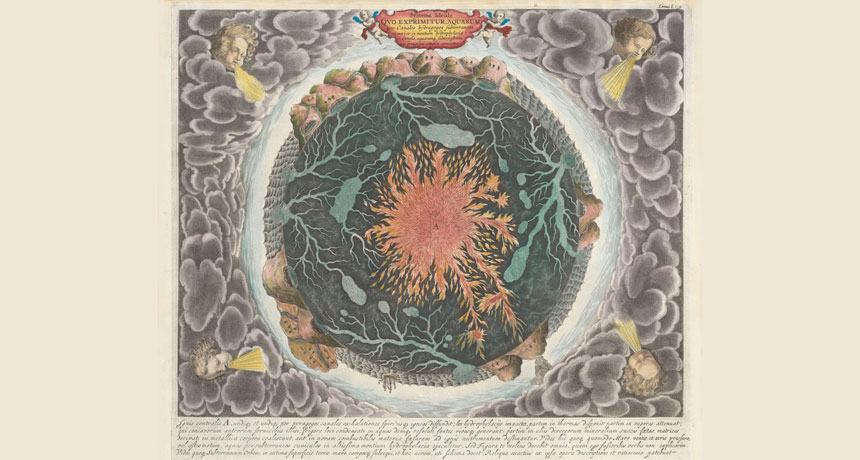A new map exhibit documents evolving views of Earth’s interior
‘Beneath Our Feet’ chronicles how people have envisioned the subsurface

NOT FAR OFF Athanasius Kircher, a 17th century Jesuit scholar, imagined Earth’s core as a ball of fire. His and other historical and modern maps are on display at the Boston Public Library.
A. Kircher, Courtesy of the Norman B. Leventhal Map Center/Boston Public Library
Much of what happens on the Earth’s surface is connected to activity far below.